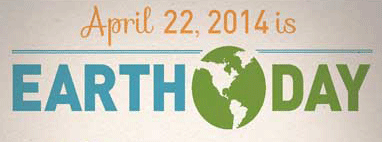Earth Day 2014: Making a positive impact on science
The date for Earth Day was chosen because April 22 fell between the academic spring break and final exams. Choosing that time of year meant students would likely be available to celebrate and recognize the day. In addition to post-secondary students taking a break, April is the month when many elementary and secondary school science fairs conclude.
For me, this year’s Earth Day marks the end of a 6-month journey to a middle school science fair. Last October my 13 year-old son was tasked with conducting a scientific experiment, producing a paper and presenting the results. Working for a scientific publisher, I had grand visions of developing a young scientific writer who one day would be cited in Scopus and published on ScienceDirect. The reality was a little different. Overwhelmed by the scope of the project, my son was quick to bury the instructions in his backpack.
It became apparent to his teacher, dad and me that we had to break down the assignment into steps he could manage. We deconstructed the project, followed a weekly timeline and focused on each specific step in the scientific process. As the project progressed, so did my son’s engagement with it. It was thrilling when he finally produced his poster board and notebook, and even more exciting to see his work selected for a third-place award in the engineering division at the Greater San Diego Science and Engineering Fair in March.
What do Scopus and the 8th grade have in common?
More than 9 million pre-college students worldwide compete in science fairs each year. Several thousands in grades 9-12 participate at the topmost levels of competition at prestigious events. New science around quality mentorship of undergraduate science students has recently emerged, and a Scopus search on “mentoring and science” returns nearly 1,500 documents! Mentoring is proving to be a key strategy for successfully recruiting and retaining students in the sciences.
Among the over 54 million records available in Scopus, I would expect that many of the cited authors started their scientific careers as students participating in local science fairs. Today they are being discovered and referenced on a global scale. The Scopus Author Identifier raises an author’s profile as a subject expert in his or her field of research. Scopus can also help researchers clarify their identities through integration with ORCID.
What does this have to do with Earth Day?
If you are looking for a way to celebrate, take a moment to recognize your strengths and determine what you have to offer that can help someone else. Contact the alumni department at your institution and take that first step to mentoring a young science student.
If you are a young scientist or researcher based in the Asia-Pacific region that has made significant contributions in the area of Sustainable Development, you have until May 20 to apply for the PROSPER.NET-Scopus Young Scientist Award in Sustainable Development.


